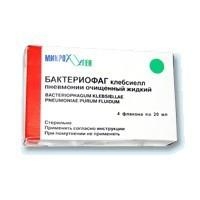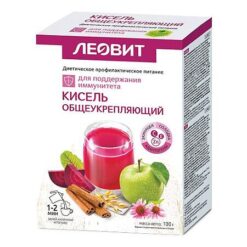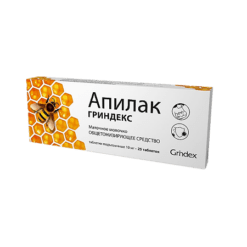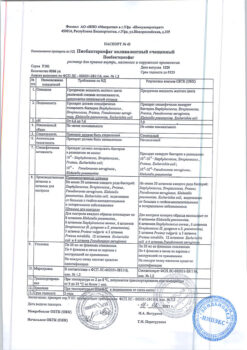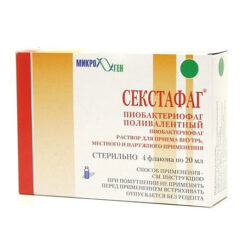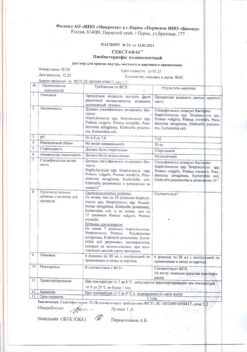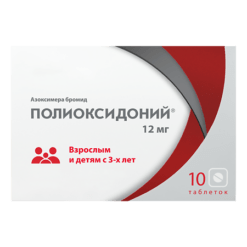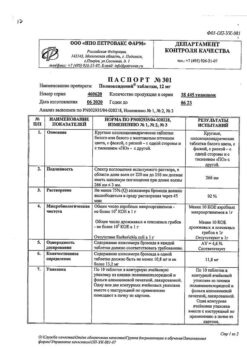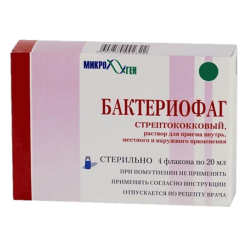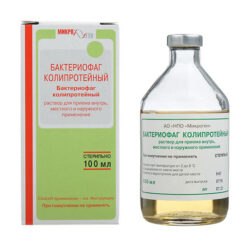No products in the cart.
Rotatek, 1 dose 2 ml 10 pcs
€1.00
Out of stock
(E-mail when Stock is available)
Description
Rotavirus(RV) is a cause of severe acute gastroenteritis in infants and young children, affecting over 95% of children by the time they reach 5 years of age, regardless of their socioeconomic and environmental status. An estimated 138 million children worldwide become ill with rotavirus gastroenteritis (RVG) each year. In hot climates (tropical and subtropical), rotavirus gastroenteritis is a seasonal disease, with epidemics occurring during the winter months. Globally, rotavirus causes approximately 28 to 71% of hospitalizations for diarrhea, regardless of geographic region or season.
Immunogenicity:
Protection against naturally occurring rotavirus infection (RVI) is largely serotype-specific. Rotatek vaccines include the most common human rotavirus serotypes G1, G2, G3, G4 and P1, which were responsible for over 88% of all RVI cases from 1973 to 2003 worldwide. The exact immunological mechanism by which Rotatek® protects against rotavirus gastroenteritis is unknown. Studies indicate a combination of factors important for immunity against rotavirus, including neutralizing antibodies to external capsid G proteins, serum and secretory IgA, and other local mucosal responses. Rotatek® induces antibodies that neutralize G1, G2, G3, G4 and P1 serotypes. In phase III studies, 92.9% to 100% of those receiving Rotatek in a three-dose regimen achieved significant increases in serum anti-rotavirus IgA.
Efficacy:
Rotatek provides protection against G serotypes included and not included in the vaccine. In REST clinical trials, efficacy against gastroenteritis of any severity caused by natural rotavirus from among the G-serotypes included in the vaccine was 73.8% and efficacy against severe rotavirus gastroenteritis was 98.2% during the first rotavirus season after completion of vaccination. Efficacy against gastroenteritis of any severity caused by serotype G9, not included in the vaccine, was 74.1%. Efficacy of Rotatek, during two rotavirus seasons after completion of vaccination against rotavirus gastroenteritis of any severity was 71.3%. Rotatek® reduced the frequency of hospitalizations, emergency room visits, and lost days of child care.
Efficacy and safety in premature infants:
In a placebo-controlled study in 1,007 premature infants (gestational age 25 to 36 weeks) who received Rotatek® according to their chronological age, the safety and effectiveness profile (70.3%) of Rotatek® was generally the same as safety and effectiveness in the general population.
Indications
Indications
Active immunization of children between 6 and 32 weeks of age to prevent gastroenteritis caused by rotaviruses of serotypes G1, G2, G3, G4 and serotypes G containing P1A[8] (e.g., G9).
Active ingredient
Active ingredient
Composition
Composition
1 dose (2 ml) contains live reassortants of human and bovine rotaviruses: reassortant G1 at least 2.2Ã106 IU*; reassortant G2 at least 2.8Ã106 IU*; reassortant G3 at least 2.2Ã106 IU*; reassortant G4 at least 2Ã106 IU*; reassortant P1A[8]at least 2.3Ã106 IU*.
* IU is an infectious unit
Auxiliaries:
sucrose – 1080 mg,
sodium hydroxide – 2.75 mg,
sodium citrate dihydrate – 127 mg,
sodium dihydrophosphate dihydrate – 29.8 mg,
Polysorbate 80 – 0.17 to 0.86 mg,
Culture medium – 15% (by volume).
How to take, the dosage
How to take, the dosage
The RotaTek vaccine is taken orally. It is not meant to be injected.
The vaccine schedule
The vaccine course consists of three doses of RotaTec with an interval between doses of 4 to 10 weeks.
The first dose of RotaTec is given to children at 6 to 12 weeks of age.
Interaction
Interaction
RotaTek vaccine can be administered to children at the same time as any of the following antigens in both monovalent and combination vaccines: diphtheria anatoxin, tetanus anatoxin, pertussis cell-free vaccine, Haemophilus influenzae type b conjugate vaccine, inactivated polio vaccine, hepatitis B virus vaccine, hexavalent vaccine (containing the above components), conjugated pneumococcal vaccine, meningococcal serogroup C vaccine. No decrease in the production of protective antibodies was observed with simultaneous administration of several vaccines and Rotatek vaccine.
The concomitant administration of oral poliovirus vaccine (OPV) and RotaTec vaccine did not affect the immune response induced by OPV, but slightly reduced the immune response to RotaTec , but there is no evidence to support a reduction in protection against severe rotavirus gastroenteritis. The immune response to RotaTek vaccine was altered by OPV two weeks after administration of RotaTek vaccine.
Special Instructions
Special Instructions
In clinical studies, vaccine virus was detected in the feces of 8.9% of vaccinated children within 1 week of the first dose of vaccine and in only 0.3% of children (1 case) after the 3rd dose. According to post-registration data, transmission of the vaccine virus to unvaccinated persons is possible. Rotatek vaccine should be administered with caution to children in close contact with people with immunodeficiencies (including those with cancer, immunocompromised people, or people receiving immunosuppressive therapy). Special hygienic rules should be observed in case of contact with the feces of a vaccinated child.
There are no data on the efficacy and safety of RotaTec vaccine in children with compromised immunity, children with asymptomatic HIV infection, or children who have received blood transfusions or immunoglobulins no more than 42 days before vaccine administration. Asymptomatic HIV infection (HIV carrier) is unlikely to affect the safety and efficacy of RotaTek vaccine. Nevertheless, due to insufficient clinical data, administration of RotaTec vaccine in asymptomatic HIV infection is not recommended.
In children with severe combined immunodeficiency, cases of gastroenteritis caused by rotavirus strains included in the vaccine have been reported.
In a clinical trial, the RotaTec vaccine was administered to approximately 1,000 children born at 25 to 36 weeks gestation, with the first dose administered at 6 weeks postpartum. The efficacy of RotaTec vaccine in this subgroup did not differ from the subgroup of children born at term. However, among these 1000 children, 19 were born at 25 to 28 weeks gestation, 55 were born at 29 to 31 weeks, and the remainder were born at 32 to 36 weeks.
The risk of intestinal intussusception in the group of patients who received the RotaTec vaccine was comparable to the risk in the placebo group, according to clinical studies. However, within 31 days after the first dose of RotaTec vaccine and especially during the first 7 days, a slight increase in the risk of intussusception cannot be ruled out. Therefore, it is important to watch closely for symptoms typical of this disease: severe abdominal pain, uncontrollable vomiting, blood in stool, bloating, fever – and seek immediate medical attention if they occur.
This level of protection after vaccination with RotaTek is achieved with a completed course of 3 doses of the vaccine. Like any other vaccine, RotaTek cannot provide complete protection for all vaccinated individuals. Rotatek is only effective against rotavirus infection and does not protect against gastroenteritis caused by other pathogens.
Clinical studies of the effectiveness of protection against rotavirus gastroenteritis have been conducted in Europe, the United States, Latin America and Asia. At the time of these clinical trials, the most common rotavirus genotype was G1P[8], while the other genotypes G2P[4], G3P[8], G4P[8] and G9P[8] were less frequently detected. The level of protection provided by the RotaTec vaccine against rotaviruses of other types and in other populations is unknown.
There are no clinical trial data on the use of RotaTec vaccine for prophylaxis after exposure to a patient with rotavirus gastroenteritis.
The decision to vaccinate a severely premature baby (pregnancy â¤28 weeks, but not less than 25 weeks), especially one with a history of respiratory immaturity, should take into account the fact that the benefit of immunization against rotavirus infection in this patient group is high and the vaccination should not be withheld or delayed. However, given the potential risk of apnea, the first immunization of a premature infant should preferably be performed in a hospital setting with an opportunity to monitor the patient’s condition for 48-72 hours.
Because the reassortants included in the RotaTek vaccine use biological material of animal origin, small fragments of pig circovirus type 1 and type 2 DNA (TBC-1 and TBC-2) are detected in the vaccine, while the virus particles of TBC-1 and/or TBC-2 themselves are absent in the vaccine. The ability of DHS-1 and/or DHS-2 to cause disease in humans is not known.
RotATEC should be administered as soon as possible after removal from the refrigerator.
The drug can be used after removal from the refrigerator within 48 hours, provided it has not been stored above 25°C. If the vaccine package has not been used within this time, it must be disposed of.
Pediatric use
RotateTec vaccine is usually well tolerated and very effective against rotavirus gastroenteritis when used in children from 6 to 32 weeks of age.
Efficacy and safety have not been established in children younger than 6 weeks of age.
Impact on the ability to drive and operate machinery
Not applicable.
Contraindications
Contraindications
Side effects
Side effects
Infectious and parasitic diseases: often – upper respiratory tract infections; infrequent – nasopharyngitis, otitis media.
The digestive system: very often – diarrhea, vomiting; infrequent – pain in the upper abdomen, hematochezia*; rarely – intestinal intussusception*.
Skin and subcutaneous tissue: infrequent – rash; rarely – urticaria*.
Respiratory system: rarely – bronchospasm.
General disorders: very often – hyperthermia.
Additional information
Kawasaki disease was observed in 5 of 36150 children in the vaccine group (
The risk of intestinal intussusception was assessed in a placebo-controlled study. At follow-up for 42 days after administration of each dose, there were 6 cases of intestinal intussusception in the group that received the RotaTec vaccine (34,837 patients) and 5 cases in the placebo group (34,788 patients). There was no correlation between the development of intussusception and the time after any of the doses were administered.
The data from post-registration studies do not support an increased risk of bowel intussusception after vaccination with RotaTec.
Particular patient groups
In children with severe combined immunodeficiency, cases of gastroenteritis caused by the rotavirus strains in the vaccine have been reported. There is a risk of apnea in premature infants (born up to and including 28 weeks of gestation).
Overdose
Overdose
There have been several known cases of overdose with RotaTek vaccine. There are no differences in the profile of adverse events compared to the use of the drug in the recommended doses.
Pregnancy use
Pregnancy use
The RotaTek vaccine is for children only, no data on pregnancy and/or during breastfeeding.
Additional information
| Shelf life | 2 years |
|---|---|
| Conditions of storage | In the dark place at 2-8 °C (do not freeze) |
| Manufacturer | Merck Sharp & Doum B.V., The Netherlands |
| Medication form | oral solution |
| Brand | Merck Sharp & Doum B.V. |
Related products
Buy Rotatek, 1 dose 2 ml 10 pcs with delivery to USA, UK, Europe and over 120 other countries.


